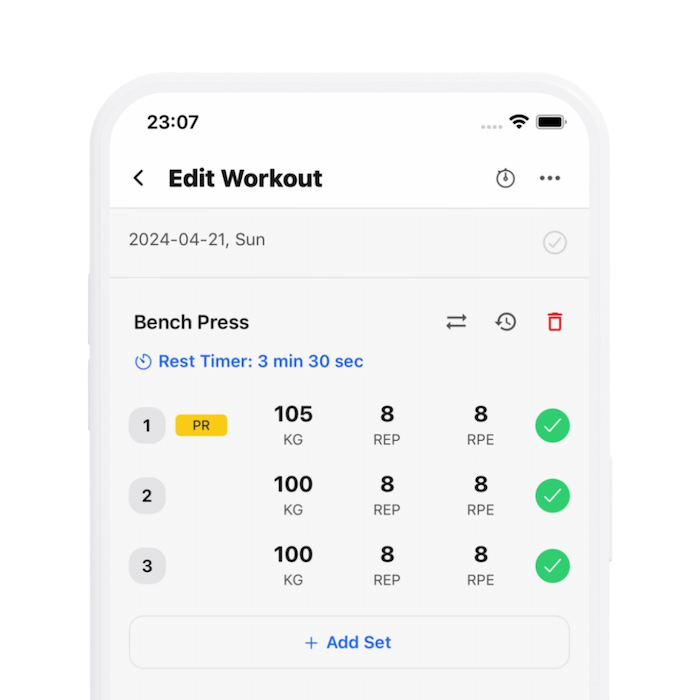30 Seconds SummaryDesign Effective Training Programs Using Relative Intensity
- Relative intensity (RI) is used to gauge workout difficulty based on the weight used relative to the maximum weight one can handle for the same number of reps.
- RI can provide a more accurate measure of a workout's challenge compared to absolute intensity (AI), which is solely based on the weight lifted.
- Using RI allows for better tracking of progressive overload, particularly in short-term training phases, by adjusting workouts according to one's capacity to perform specific rep counts.
- RI is especially useful in programs that use undulating rep schemes, as it facilitates easy comparison of workout difficulties across sessions regardless of changes in AI.
- In designing training blocks, RI can help structure the progression of workouts from low to high intensity, aligning with set training goals like achieving a new one-rep max or increasing the total reps at a certain weight.
- RI aids in customizing training programs by allowing adjustments based on individual recovery rates and abilities, which can vary widely among lifters.
- RI also supports autoregulation training, enabling adjustments of workout intensities based on subjective daily performance and recovery states.
Biolayne
Joseph Munoz
